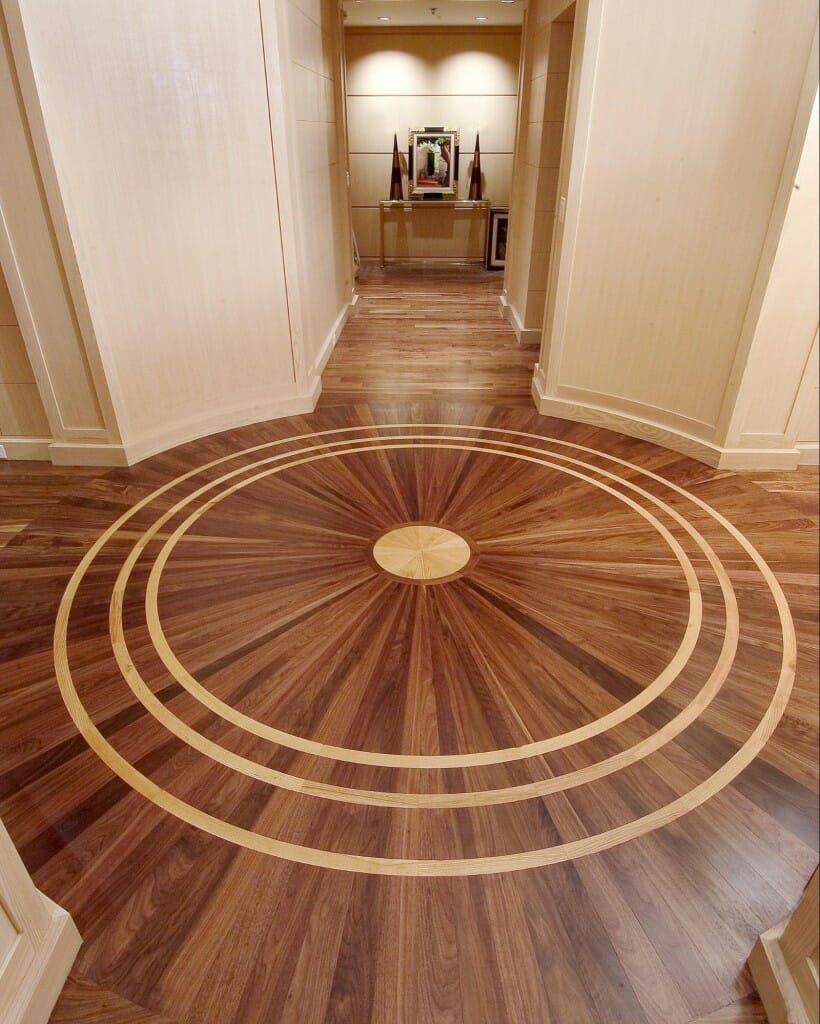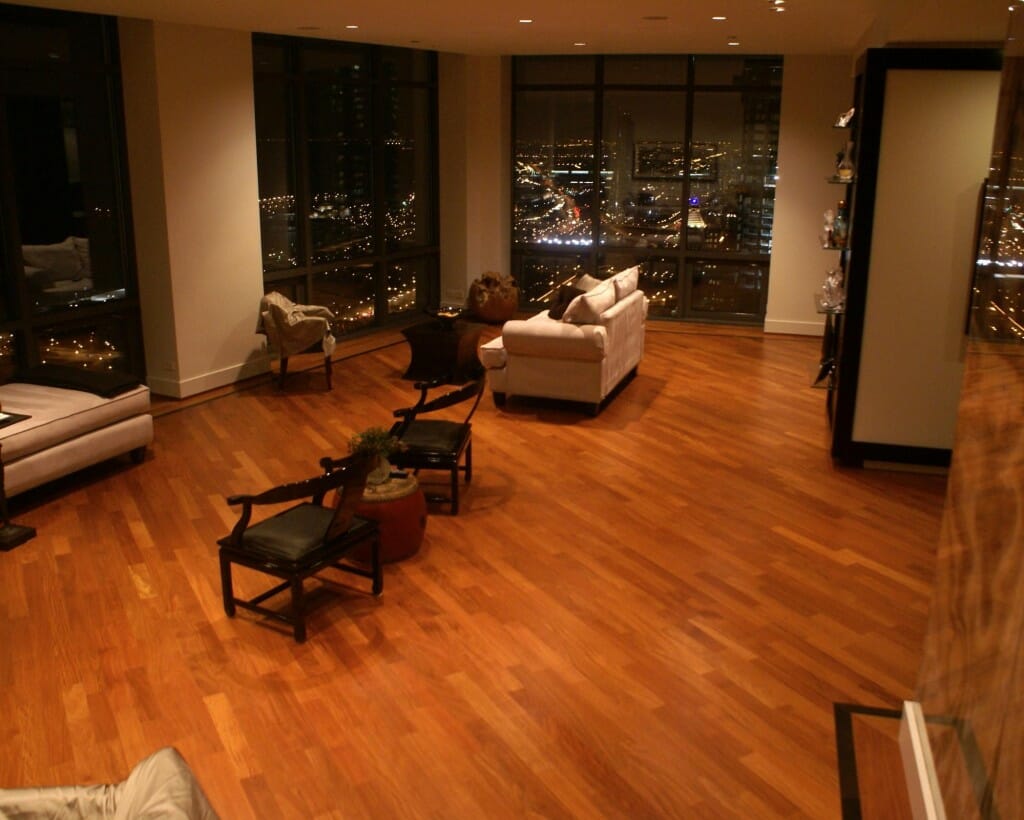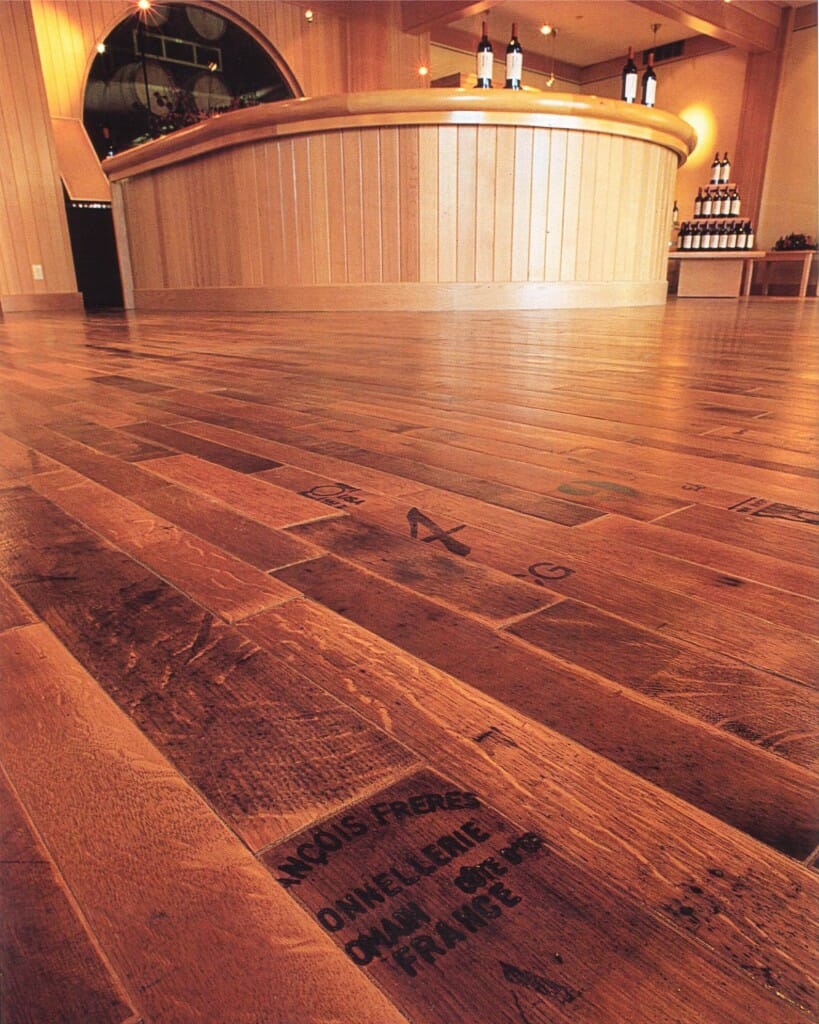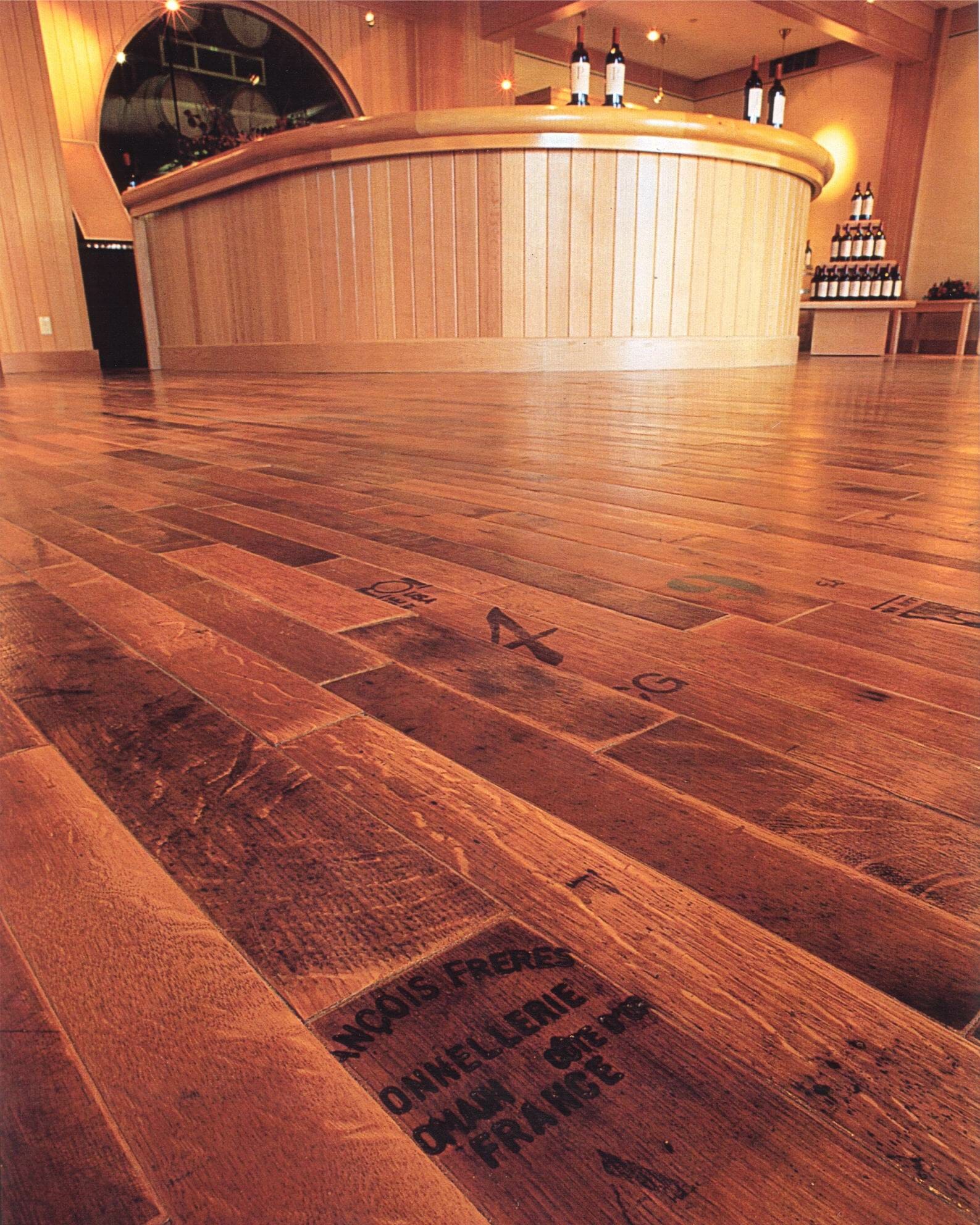Gone are the days when terrazzo, marble, and stone nudged out wood floors as a favorite choice to make an apartment building lobby and hallways look chic. Plank by plank, wood flooring has become the go-to preference for flooring because it’s warm, inviting, and practical.
If you’ve started comparing wood flooring choices, you know how many options there are to consider: flooring should match your building’s age and style, it should wear well no matter how much foot traffic there is, it should clean up easily no matter what is trekked in from outside (rain, snow, mud, and wintery salt deposits).
And then, of course, you’ll want to consider personal style preferences as well. Finishes, colors, and even plank width change overtime, so it’s important to choose something that’s as timeless as possible (and durable, too).
The World Floor Covering Association and National Wood Flooring Association, two of the country’s main trade associations, recommend four distinct wood flooring options for style and lifespan. Here are some of the things you’ll want to consider when deciding between solid wood, engineered hardwood, reclaimed wood boards, and porcelain “wood” planks.

Solid wood planks
Sometimes referred to as “real” wood, these 3/4-inch planks can be refinished and sanded as wear and tear occurs. The boards, which come in a variety of types, including red and white oak, hickory, ash, domestic maple, and even Brazilian cherry, can be stained in a variety of colors. Some may indicate they were harvested responsibly by having certification from the Forest Stewardship Council (FSC).
When shopping for solid wood boards, consider:
- Width. Boards generally come from a standard 2 1/4 inches, but can be as wide as 12 inches. According to Chris Sy, vice president, commercial development at Carlisle Wide Plank Floors in Stoddard, N.H, wider boards are very popular lately. Meanwhile, Anita Howard, COO of the National Wood Flooring Association says that 12-inch wide planks are available in limited quantity, but widths between 6 and 8 inches are more common and readily available. Another recent trend is to use variety of widths together, like pairing 3-inch planks with 8-inch planks.
- Length. This may be determined by what’s available, (some boards are as long as 12 feet), but as Sy explains, the most important thing is that the length is proportional to the width of the planks.
- Color. The ever-changing world of interior design means the lighter vs. darker debate leans different ways at different times. Howard says she now sees a trend toward darker woods and gray stains. Sy, however, finds that many of his clients are favoring lighter woods and stains and even the unfinished driftwood look. The key is to pick a color that works in the setting and wears well. Both of the experts we spoke with made a point to say that darker stains and wood show more dirt.
- Finish. The durability and scratch resistance depends more on the finish than the wood species. Acrylic finishes can be applied that are healthy and nontoxic, and oil finishes are returning, which may require greater maintenance and aren’t as durable for high-traffic areas.

Engineered hardwood
Also referred to as prefabricated wood, this option is not a laminate, as some say. As Tom Jennings, vice president of professional development at the World Floor Covering Association explains, it’s actually multiple layers (or plies) of real wood, affixed to each other in a way that creates a sturdy wood plank that can expand and contract similar to solid wood floors. Plies should range from 3/8 inch to 1/2 inch so there’s a sufficient top level to sand, Jennings says. Both engineered and solid wood flooring can be prefinished at a manufacturing facility, making installation easier.

Reclaimed wood boards
Planks recycled from old barns and factories have caught on because they offer instant patina and charm with knots and wormholes visible without hand or mechanical distressing. They’re also a green building material since they reuse something already in existence. Many companies specialize in this niche, including Hudson Co. in Pine Plains, N.Y. Recently, they installed reclaimed heart pine at the new Whitney Museum in New York city, making it the largest reclaimed floor in the country. The boards tend to be more expensive to prepare and install, however, and are considered a better choice for a home or commercial space than a multi-story apartment building, except at the most upscale level. Company president Jamie Hammel suggests using reclaimed boards as a strong design feature for an accent wall in a lobby. Similar looks can be achieved through hand scraping, which offers a textured, three-dimensional, effect, as does mechanical wire brushing.
Porcelain “wood-look” planks
These tile lengths resemble wood with faux graining, are considered indestructible. They come in a variety of colors, are easy to install, and require little maintenance. Price varies greatly and some may be less expensive than certain wood boards and others more, depending on the finish, complexity of design, and other factors. The downside for some is that they don’t replicate wood exactly when viewed close-up, are too cold to the touch, present a visible grout line, and require a well laid subfloor.
By taking all these factors into account, you’ll get the right wood floor for your lobby, amenity spaces, apartment hallways, and individual units. If you’ve recently invested in new floors for your buildings or units, what useful tips can you share with other property managers? Share it with us in the comments below!

